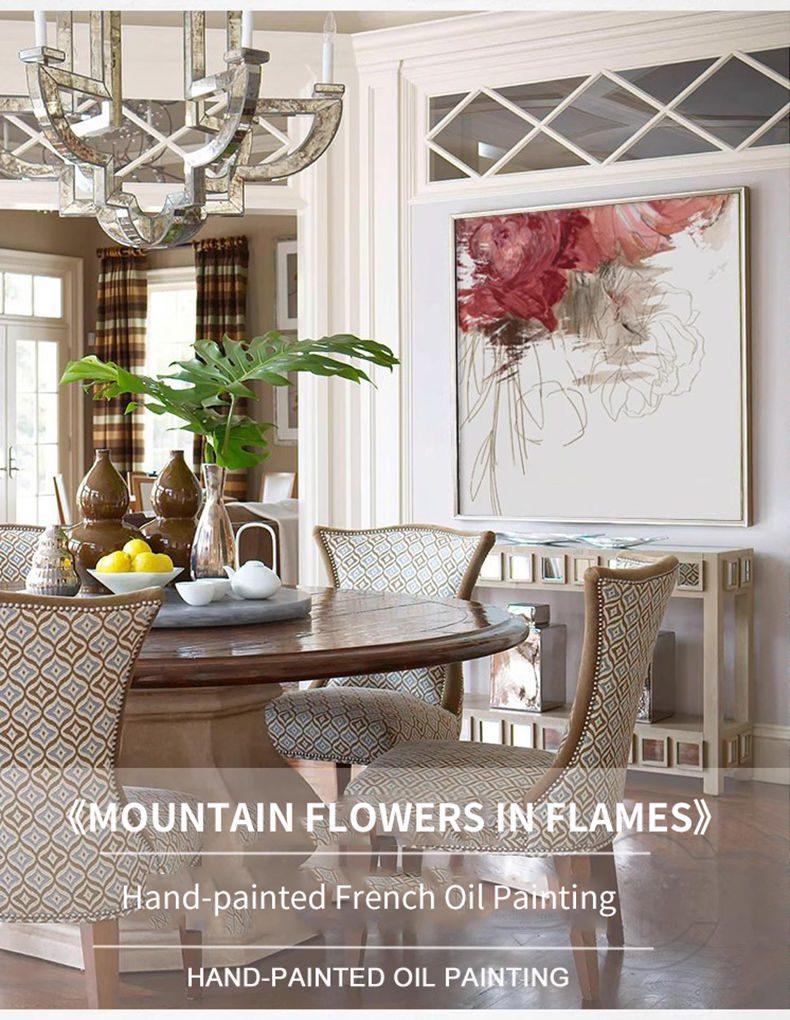Hand-painted oil paintings have multiple connections with other painting genres in artistic creation, as detailed below:
The connection with watercolor painting
The relationship between technique and creation: In the history of art, oil painting and watercolor have a close relationship. They share commonalities in shaping forms and using color relationships. On the one hand, artists use watercolor to create oil painting drafts, taking advantage of the flexibility of watercolor to quickly capture creative inspiration and composition. On the other hand, the technical language of oil painting was transplanted to watercolor, enriching the expressiveness of watercolor and thereby promoting the development of watercolor art. For instance, many painters engage in these two arts in a dual capacity. Some even abandon oil painting in their later years and specialize in the study of watercolor painting, indicating that there is room for mutual learning and integration in terms of techniques between the two.
The influence of artistic style: The transformation of oil painting art will affect the enlightenment of watercolor technique language. For instance, the Swedish oil painter Zorn had a profound foundation in watercolor painting in his early years. Later, when painting oil paintings, he naturally developed the habit of forming watercolor in one go, as well as the characteristics of watercolor brushstrokes and the blurring of boundaries. All these share similarities with Impressionism, making his works more appealing. This is a breakthrough contribution in the field of painting.
The connection with sketching
The fundamental connection of creation: Sketching is the prerequisite for the creation of realistic oil painting art, and the relationship of sketching is the foundation of color relationship. No matter what style of painting it is, it cannot do without the foundation of sketching. The preparatory stage of composition and modeling for realistic oil painting is also completed in the form of sketching. Through the handling of the blurriness and solidity of lines, the light and shade of colors, the spatial composition structure, and the formation of creative subject matter and ideas during the sketching process, the next step of realistic oil painting creation is carried out.
The connection of expression techniques: During the transition from sketching to oil painting, there is a close connection in aspects such as the shaping of forms, the application of colors, the handling of light and shadow, and the presentation of texture. For example, in terms of form shaping, in sketching, lines are used to outline the contours, while in oil painting, the three-dimensional effect of the object can be expressed through the changes of light and shade and color. In terms of color application, the light and shade relationship in sketches can be expressed in oil paintings through the lightness and purity of colors. In terms of light and shadow treatment, in sketches, light and shadow are expressed through the boundary line of light and shade, while in oil paintings, the treatment of light and shadow is more delicate and can be enhanced through the contrast of colors. In terms of texture presentation, the texture in sketches is mainly expressed through the variations in the thickness and light and shade of lines, while in oil paintings, the expression of texture is more intuitive and can be conveyed through the delicate changes in brushstrokes and colors.
The connection with digital painting
Technique and concept inheritance: Traditional painting techniques are the foundation of modern digital painting technology, and the two have a complementary relationship of inheritance. The pressure-sensing technology widely used in digital painting precisely reproduces the line weight control of traditional sketching. The “Color Mixer Brush” function in software such as PS directly simulates the color mixing principle of the color palette. For instance, the Central Academy of Fine Arts has set up a course called “Digitalization of Traditional Materials”, requiring students to precisely reproduce the granular texture of mineral pigments in Dunhuang murals on ipads, demonstrating the integration of traditional techniques and digital technology.
The connection between the creative process and artistic value: The unique layer function and the revocation of historical records in digital painting have overturned the traditional single-layer painting mode. However, in terms of artistic value, digital painting is also influenced by traditional painting. For example, when Christie’s auctioned the first AI painting “Edmond de Belamy” in 2019, the evaluation report clearly pointed out that its algorithm training data contained the feature library of Renaissance paintings, indicating that digital paintings borrowed the artistic concepts and expression techniques of traditional paintings in the creative process.
